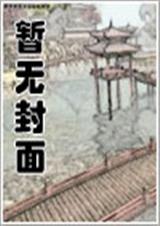英语天堂-第138部分
按键盘上方向键 ← 或 → 可快速上下翻页,按键盘上的 Enter 键可回到本书目录页,按键盘上方向键 ↑ 可回到本页顶部!
————未阅读完?加入书签已便下次继续阅读!
austerity of classical Modernist painting by concentrating on the physical act of painting。 Much of photography’s prestige today derives from the convergence of its aims with those of recent art; particularly with the dismissal of abstract art implicit in the phenomenon of Pop painting during the 1960’s。 Appreciating photographs is a relief to sensibilities tired of the mental exertions demanded by abstract art。 Classical Modernist painting—that is; abstract art as developed in different ways by Picasso; Kandinsky; and Matisse—presupposes highly developed skills of looking and a familiarity with other paintings and the history of art。 Photography; like Pop painting; reassures viewers that art is not hard; photography seems to be more about its subjects than about art。
Photography; however; has developed all the anxieties and self…consciousness of a classic Modernist art。 Many professionals privately have begun to worry that the promotion of photography as an activity subversive of the traditional pretensions of art has gone so far that the public will forget that photography is a distinctive and exalted activity—in short; an art。
1。 What is the author mainly concerned with? The author is concerned with
'A'。 defining the Modernist attitude toward art。
'B'。 explaining how photography emerged as a fine art。
'C'。 explaining the attitude of serious contemporary photographers toward photography as art and placing those attitudes in their historical context。
'D'。 defining the various approaches that serious contemporary photographers take toward their art and assessing the value of each of those approaches。
2。 Which of the following adjectives best describes “the concept of art imposed by the triumph of Modernism” as the author represents it in lines 12—13?
'A'。 Objective 'B'。 Mechanical。 'C'。 Superficial。 'D'。 Paradoxical。
3。 Why does the author introduce Abstract Expressionist painter?
'A'。 He wants to provide an example of artists who; like serious contemporary photographers; disavowed traditionally acomepted aims of modern art。
'B'。 He wants to set forth an analogy between the Abstract Expressionist painters and classical Modernist painters。
'C'。 He wants to provide a contrast to Pop artist and others。
'D'。 He wants to provide an explanation of why serious photography; like other contemporary visual forms; is not and should not pretend to be an art。
4。 How did the nineteenth…century defenders of photography stress the photography?
'A'。 They stressed photography was a means of making people happy。
'B'。 It was art for recording the world。
'C'。 It was a device for observing the world impartially。
'D'。 It was an art comparable to painting。
Vocabulary
1。 fine arts 美术(指绘画,雕刻,建筑,诗歌,音乐等)
2。 assert 主张,声明,维护(权利)
3。 privileged 特殊的,享受特权的,特许的
4。 pretentious 狂妄的,做作的
5。 irrelevant 不相干的,无关的
6。 subversive 破坏性的,颠覆性的
7。 disclaimer 弃权者
8。 harry 掠夺,折磨
9。 austerity 严格,简朴
10。 convergence 聚合,集合点
11。 implicit 含蓄的
12。 distinctive 区别的,独特的
13。 exalted 高贵的,高尚的
难句译注
1。 The earliest controversies about the relationship between photography and art centered on whether photograph’s fidelity to appearances and dependence on a machine allowed it to be a fine art as distinct from merely a practical art。
'结构简析' 此句为主谓语+宾语从句。As distinct from … 句修饰fine art。
'参考译文' 最早有关摄影和艺术关系的争论点集中在摄影对表象的忠实和对机器的依赖能否使它成为艺术,有别于仅仅是实用的美术。
2。 Against the charge that photography was a soulless; mechanical copying of reality; photographers asserted that it was instead a privileged way of seeing; a revolt against commonplace vision; and no less worthy an art than painting。
'结构简析' 结构是主谓宾从。句子长是因为介词短语against the charge 后接同位说明语the photography was …宾语从句中有三组表语:a way of seeing; a revolt; an art。
'参考译文' 正队这种指责:摄影是一种没有灵魂的,对现实机械性复制,摄影工作者声名摄影不是复制品,而是一种特殊的观察方式,是对平庸视觉的叛逆,和绘画一样有艺术价值。
3。 It shows the extent to which they simply take for granted the concept of art imposed by the triumph of Modernism: the better the art; the more subversive it is of the traditional aims of art。
'结构简析' 句子结构为主从句,which引导宾从作介词to 的宾语,宾从中imposed by …分词短语修饰concept of art; the better …the more 是说明concept of art。
'参考译文' 这说明他们就是把现代主义胜利所强加的艺术概念视为合理的,其合理程度是:艺术越强,对艺术的传统目的破坏得越大。
4。 Photographers’ disclaimers of any interest in making art tell us more about the harried status of the contemporary notion of art than about whether photography is or is not art。
'结构简析' 名词disclaimer放弃,否认。上下文翻译中可译成动词含义,否认抛弃创作艺术的兴趣。
'参考译文' 摄影师否认对创作艺术感性趣,他们告诉我们更多的是有关现代艺术概念的令人苦恼的情况,而不是摄影是不是艺术问题。
5。 Many professionals privately have begun to worry that the promotion of photography as an activity subversive of the traditional pretensions of art has gone so far that the public will forget that photography is a distinctive and exalted activity—in short; an art。
'结构简析' 复合句。句内三个that clause。 第一个是worry的宾从;第二个是so far that 的句型。第三个是forget 之宾从。
'参考译文' 许多专业摄影人员私下开始担忧,强调摄影是对传统艺术意图的颠覆活动的做法有些过分了,(活动的宣传走得太远)以致使公众忘记摄影是一种独特的高尚活动——总之,是一种艺术。
写作方法与文章大意
文章论及“摄影是否是艺术”问题,这样采用对比手法。一开始就讲述了19世纪摄影家为确立摄影是艺术而提出的种种依据,并把美术和摄影作比较,来反驳否定摄影的论点:忠于表象,以来机器,没有灵魂……
确立的艺术后,他们为摆脱油画那种矫饰的艺术意图而努力推崇“艺术越佳,对艺术传统意图破坏越大”的论点。作者把这些摄影家和抽象表现主义画家相提并论,把摄影和流行画等同;和古典现代主义画家和画相对抗。
最后结论是这种破坏传统艺术意图的活动不能走得太远,因为摄影毕竟是艺术,否则……。
答案祥解
1。 C。 说明当代严肃的摄影家对摄影作为艺术的态度,并把他们这些态度放在历史的进程来观察。见文章大意。他们先为摄影是否是艺术而争辩,后为否定其艺术而努力。重点放在主题上。
A。 界定显得主义者对艺术的态度。 B。 解释摄影是如何作为美术出现的。第一段涉及,见难句译注2。 D。 界定当代严肃摄影家对待他们艺术所具有的各种观点,并评定每种观点的价值。这三项只是文内提到的某些方面,不是主要的。
2。 D。 矛盾的。见难句译注3。
A。 客观的。 B。 机械的。 C。 表面的。
3。 A。 他要列举这样艺术家的例子,他们象当代严肃的摄影家一样抛弃了传统上被接受的现代艺术目的。见第三段第二句:“举例说,这些认为通过拍照可以摆脱绘画所表现的艺术的矫饰的摄影家,使我们想起了那些抽象表现主义绘画的严肃的思想。”
B。 他想在抽象表现主义画家和古典现代主义画家之间找出相似点。 C。 他要在流行艺术家和其它艺术家之间作一个对比。 D。 他想解释为什么严肃摄影,象其它当代视觉形式一样不是艺术,而且也不应当充作艺术。
4。 D。 摄影是一种艺术,可以和油画相比美。见难句译注2。
A。 他们强调摄影是使人们快乐的手段。 B。 是记录世界的艺术。 C。 摄影是公正观察世界的工具。
Passage one(The only way to travel is on foot)
The past ages of man have all been carefully labeled by anthropologists。 Descriptions like ‘ Palaeolithic Man’; ‘Neolithic Man’; etc。; neatly sum up whole periods。 When the time comes for anthropologists to turn their attention to the twentieth century; they will surely choose the label ‘Legless Man’。 Histories of the time will go something like this: ‘in the twentieth century; people forgot how to use their legs。 Men and women moved about in cars; buses and trains from a very early age。 There were lifts and escalators in all large buildings to prevent people from walking。 This situation was forced upon earth dwellers of that time because of miles each day。 But the surprising thing is that they didn’t use their legs even when they went on holiday。 They built cable railways; ski…lifts and roads to the top of every huge mountain。 All the beauty spots on earth were marred by the presence of large car parks。 ’
The future history books might also record that we were deprived of the use of our eyes。 In our hurry to get from one place to another; we failed to see anything on the way。 Air travel gives you a bird’s…eye view of the world – or even less if the wing of the aircraft happens to get in your way。 When you travel by car or train a blurred image of the countryside constantly smears the windows。 Car drivers; in particular; are forever obsessed with the urge to go on and on: they never want to stop。 Is it the lure of the great motorways; or what? And as for sea travel; it hardly deserves mention。 It is perfectly summed up in the words of the old song: ‘I joined the navy to see the world; and what did I see? I saw the sea。’ The typical twentieth…century traveler is the man who always says ‘I’ve been there。 ’ You mention the remotest; most evocative place…names in the world like El Dorado; Kabul; Irkutsk and someone is bound to say ‘I’ve been there’ – meaning; ‘I drove through it at 100 miles an hour on the way to somewhere else。 ’
When you travel at high speeds; the present means nothing: you live mainly in the future because you spend most of your time looking forward to arriving at some other place。 But actual arrival; when it is achieved; is meaningless。 You want to move on again。 By traveling like this; you suspend all experience; the present ceases to be a reality: you might just as well be dead。 The traveler on foot; on the other hand; lives constantly in the present。 For him traveling and arriving are one and the same thing: he arrives somewhere with every step he makes。 He experiences the present moment with his eyes; his ears and the whole of his body。 At the end of his journey he feels a delicious physical weariness。 He knows that sound。 Satisfying sleep will be his: the just reward of all true travellers。
1、Anthorpologists label nowaday’s men ‘Legless’ because
A people forget how to use his legs。
B people prefer cars; buses and trains。
C lifts and escalators prevent people from walking。
D there are a lot of transportation devices。
2、Travelling at high speed means
A people’s focus on the future。
B a pleasure。
C satisfying drivers’ great thrill。
D a necessity of life。
3、Why does the author say ‘we ar





